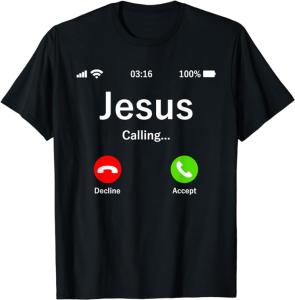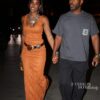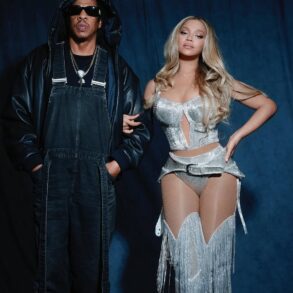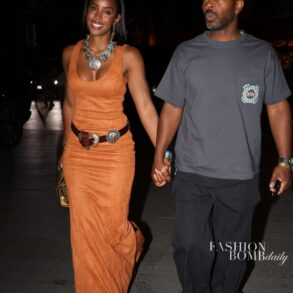My weekly Youtube episodes include a section call The Fashion Police. This is where I delve into the fun happenings in social and political circles related to fashion. This started as a whimsical off-the-cuff discussion but developed into a regular segment. It’s fun to share my input on the fashionable (non)sense from the week in review.

Check my style
While researching Christian Hip Hop for another blog post I came across the rapper known as Forgiven. I have to admit, his track “Check My Swag” took me by surprise. His honest personal story coupled well with his descriptive analysis of an exterior appearance that is otherwise an undetected Christian identity. Tattoos and street clothes tend to profile a negative image.

The Christian rapper PyRexx, in his track “One” exemplifies this point. Sharing as a street preacher, PyRexx testifies to others calling into question institutionalized biases and counter culture ideology. Taking active possession of body art – tattoos – as signifiers of faith challenges assumptions of power founded on identity profiling. PyRexx’s body space is not limited to a corporal objective other. Flipping the script on the visual media – the body politic – and representing those markers of a tainted past as signifers of a development and security in faith speaks from a contemporary socio-linguistic dialectic.

The common discourse stated by Forgiven and PyRexx is that the external is not the eternal. The dynamic ability for one to engage their faith and use their historical narratives to pronounce faith has the ability to reach those not active within a faith/belief system. This led my research to probe deeper into the area of modern Christian fashion and apparel. What better way to express faith/belief than through a hoodie. Branding and advertising agencies know all too well that a simple t-shirt can speak more than words, and shower profits at the same time. Following this trajectory, critical theory scholars who specialize in space-place discourse relentlessly work to analyze this socio-political arena.
A Critique in flux
Nasrullah Mambrol helps this argument against the limitations of space-place in the article Spatial Criticism: Critical Geography,, Space, Place and Textuality (2017). Mamrol quotes Foucault who notes the
‘devaluation of space’ that had prevailed for ‘generations of intellectuals’: `Space was treated as the dead, the fixed, the undialectical, the immobile. Time, on the contrary, was richness, fecundity, life, dialectic.’
This simple yet complex point reifies the expressed argument by Forgiven and PyRexx on their integral use and dislocation of institutionalized biases founded on visible cultural profiling. Merely looking at a rapper with tattoos one would (pop) culturally assumes a negative identity and alternative lifestyle. These noted Christian Hip Hop artists script these signifiers as testimonial icons of their faith/belief. These emblems are fluid, flexible, and serve a physical street preaching character. In his book Word on the Street: How to Share the Gospel in Open Air, (2020), Ray Comfort relates the necessity to reach a populist in a “godless culture” to provide the foundations of faith/belief (Acts 17:17). Contemporary Christian Hip Hop artists are doing the same nonverbally with reference to their tattoos.
Nasrullah Mambrol returns to Foucault who continues to define that
[f]or all those who confuse history with the old schemas of evolution, living continuity, organic development, the progress of consciousness or the project of existence, the use of spatial terms seems to have an air of an anti- history. If one started to talk in terms of space that meant one was hostile to time.
Applying this expanded relationship theme of time, the often assumed positions of cultural power are limited. Identity is not granted the ability to flow forward in a dynamic inter-textual dialogue with contemporary faith/belief. Christian Hip Hop artists afford their expressions to rupture, cut-mix, flow, and sermonize as dynamic signifiers of faith/belief. These four points are the core Four Elements of Hip Hop culture. These elements retain their contemporary relevance as socio-political linguistic vernacular expressing a faith/belief pedagogy.

It’s not just what you wear
The clothing, tattoos, and sounds of modern Christian Hip Hop are not limited to a fringe cultural arena. Signifiers of pop culture can be, and are, re-presented as signifiers of faith/belief through action-meaning-content/context from Christian Hip Hop artists. Therefore, a t-shirt is not just a simple article of clothing. It’s a symbol of faith/belief reference, a definition of self apologetically founded.
Below are a few Christian fashion industries that provide a clothing ministry presence. It’s not all tattoos or phat beats. There’s some good tops and hats to rock. After all this, we can see, it’s not a simple G thang. There’s more swag up in that grill. Hit is, and I’ll catch ya’all on the flip. Chill, peace out.
Christian Fashion Industries
Walk In Faith – Basic apparel line with an interesting blog site.
Glorify God Ever Wear – Active clothing line. Interesting blogs, a Youtube Channel, and a Prayer Request submission page.
Fabrics of Faith – Contemporary urban apparel. Their tagline states, “It’s OK to be inked and share your faith.”

NHIM – Modern younger apparel. They have a Prayer line page and Spotify Music Playlist The company philosophy is stated on the biblical quote,”IN HIM WE LIVE AND MOVE AND HAVE OUR BEING.” ACTS 17:28.
This post was originally published on this site be sure to check out more of their content.








